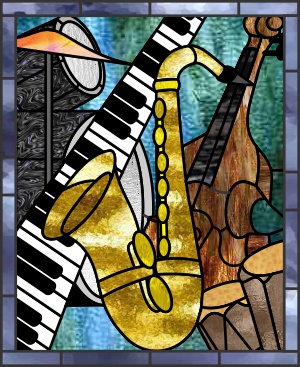I know well that the right brain – left brain dogma is overly popularized by the lay community, and it is easy to find discourse pro and con, but lateralization and uniqueness of each half and the terrific communication that occurs between the hemispheres is amazing, and a great area for research.
It clearly requires two hemispheres to be logical – or to be creative, and each offers valuable input, but for me, thinking in “visual” terms has become more pronounced as I have reinforced it with over the decades of microscopy. And what a wonderful evolutionary adaptation lateralization of the brain has been at providing a great exchange of perspective within a single individual’s ability to perceive what they see. This ultimately allows for inter-individual communication of ideas from those that favor one or the other approach to thought, to produce a truly global, universal “whole” mix of collective thought.
While my approach appears to be more visual, I rely on input from those that process information more numerically for help in solving problems.
Case in point is my own approach to finding out what surfactant protein D (SP-D) “looks like”, might show more neural activity in my right brain, were it mapped, while I was researching this subject.
My initial interest in SP-D, not surprisingly, came from “visual” input: albeit as an annoyance at a researcher who chose to use his “artistic licence” to produce what was an incredibly bad diagram (and to be fair, there exists a spectrum of diagrams of SP-D from the totally thoughtless to the acceptable (a couple listed here) (1, 2, 3, 4) which covered the truth that he really did not “know” in his mind’s eye what SP-D looked like even though he was researching it.
I immediately went on a quest to find every published diagram, drawing, rendering or molecular model, as well as running my own protein modeling of published sequences of SP-D on various online programs, which included those published models of the CRD and coiled coil neck on RCSB. The search was to see if any peer-reviewed journals from surfactant research community had any models of SP-D which fit images seen under the microscope (in this case AFM, TEM (shadowing and negative staining). None found to date. Whats more, I found publications that totally ignored parts of the trimer, calling the CRD and neck region SP-D as if it were the “whole” of the protein, not emphasizing that it was in fact a protein that has not been completely moedled yet. The best description (as of this date 11-29-2021) there was one post on RCSB that referred to the SP-D model as a “fragment” Kudos.
SP-D is a very interesing molecule that can multimerize, at several levels, and sometimes that organization affects function. The models and the microscopic images provide more together than apart. I saved about 100 images from several publications (various techniques, but mostly AFM, upon which I used about a half a dozen image processing programs to ehnahce, upgrade, depixelate. The purpose was to find a “commonality”. Those images were processed as a whole images, not just elements of the image, so I think it is/was justified. The image processing filters applied with the most successful (in my opinion) outcomes and producing the smooth and most informative grayscale plots (in my opinion) are the old standards. Gaussian blur, unsharp mask, median, min, max (noise), and limit range.
The processed images were then assessed along a centered, segmented line trace of each arm (as the basic units of SP-D are trimeri arms) either in corelDRAW or ImageJ or Gwyddion (in which, in my experience, the latter doesnt really work here very well at all) and arm length was calculated in nm from the accompanying and simultaneously processed bar marker. ImageJ has an easly run routine for grayscale measurements along those lines and was used to create plots exported to excel (.csv ). A screen print of the trace and resulting plot were saved with the data. Brightness peaks were counted by eye (subjective) while the image was open in ImageJ as was peak number (subjective) counted while the grayscale plot was open in ImageJ.
Those plots were normalized over x and/or over x, y and peaks were counted again in BatchProcessing using LTI (lag threshold and influence)(thus a semi-subjective count where any peak width of a single line width was ignored or if proximate to a bigge peak, blended), and also peaks were determined in ImageJ under the menu “find Maxima”, using three settings for “Maximum” points. These points were counted along the lines of the tracings only (ImageJ, Find Maxima; 0.5, 1, 2).
Frankly, data are all over the map. My favorite is the subjective count by eye.
My goal was to plot so many trimers that at some point the variations in the number of peaks along a plot caused by random noise, preparation artifacts, image processing variations, publication quality, overlapping molecules, imperfect traces, etc, would fade into a background noise that could be over come with appropriate “signal” processing of the plots and that the most likely (by some statistical measure) number of peaks along each trimer would emerge.
COMMENT: With access to a very interesting website on signal processing which defines the options for processing. and with the help of its creator I was able to learn how to use function code to assess plots (.csv plots of SP-D trimers) in Octave. Looking over this website made me think carefully about signal processing of an image that had already been image processed….. was this in fact redoing what I had already done. I considered the name of the algorithms being used…. they are remakrably similar, even identical names. Is this duplication…. what will be gained by signal processing my image processed signals. (more later i hope)




